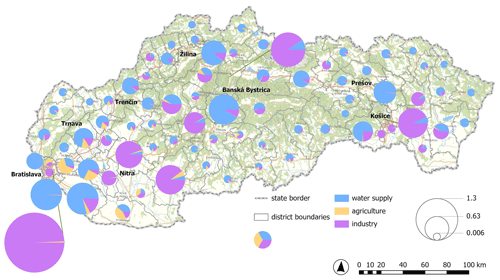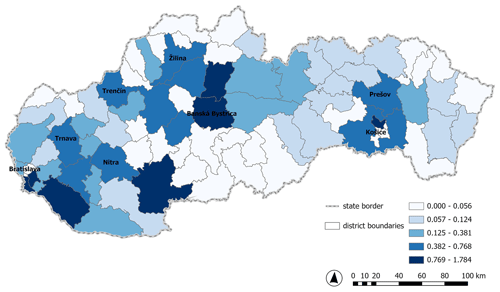The spatial distribution of surface and groundwater abstractions in Slovakia in the period 2013–2022 vs 2022
In recent years, the impacts of climate change have become increasingly apparent; Slovakia has witnessed a rise in extreme weather conditions caused by climate change. To address these challenges, we analyze and prepare documents focused on monitoring and issuing drought warnings. These documents, including Slovakia's water resource balance, serve as fundamental materials for water management planning. The water resource balance assesses the relationship between water demands and available resources in the past year, identifying areas and times where water demands exceed supply. Additionally, our analysis provides a detailed map of surface and groundwater abstractions across Slovakia, categorizing total and individual abstractions by sector (e.g., public water supply systems, agriculture, and industry). We present surface and groundwater abstraction averages for the period of the last decade 2013–2022, along with its spatial distribution in Slovak districts. This comprehensive approach enables us to better understand and manage our water resources effectively.









